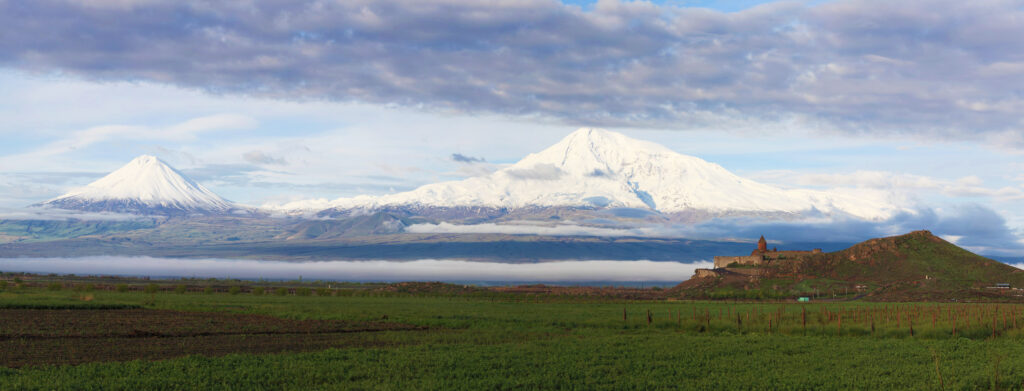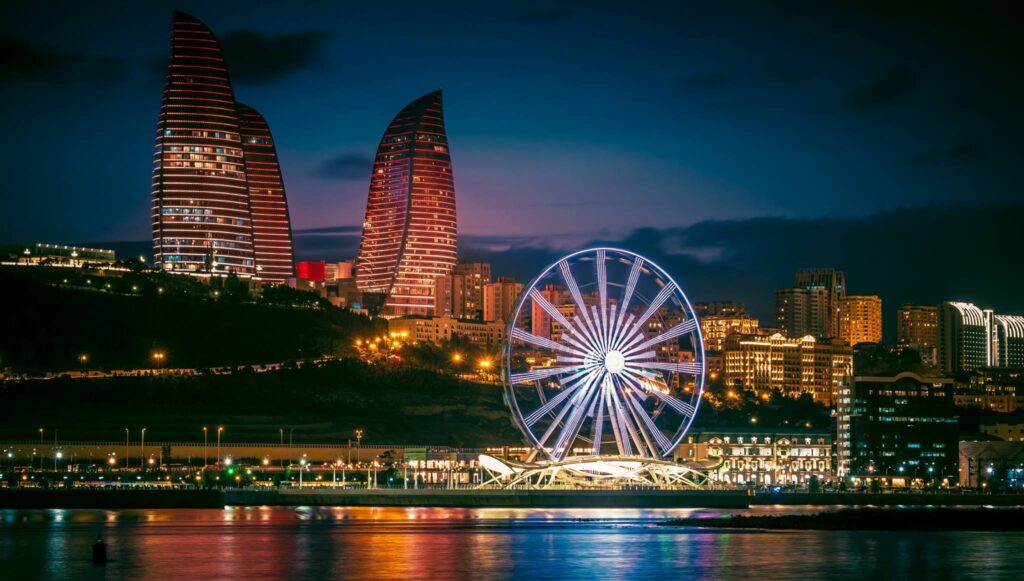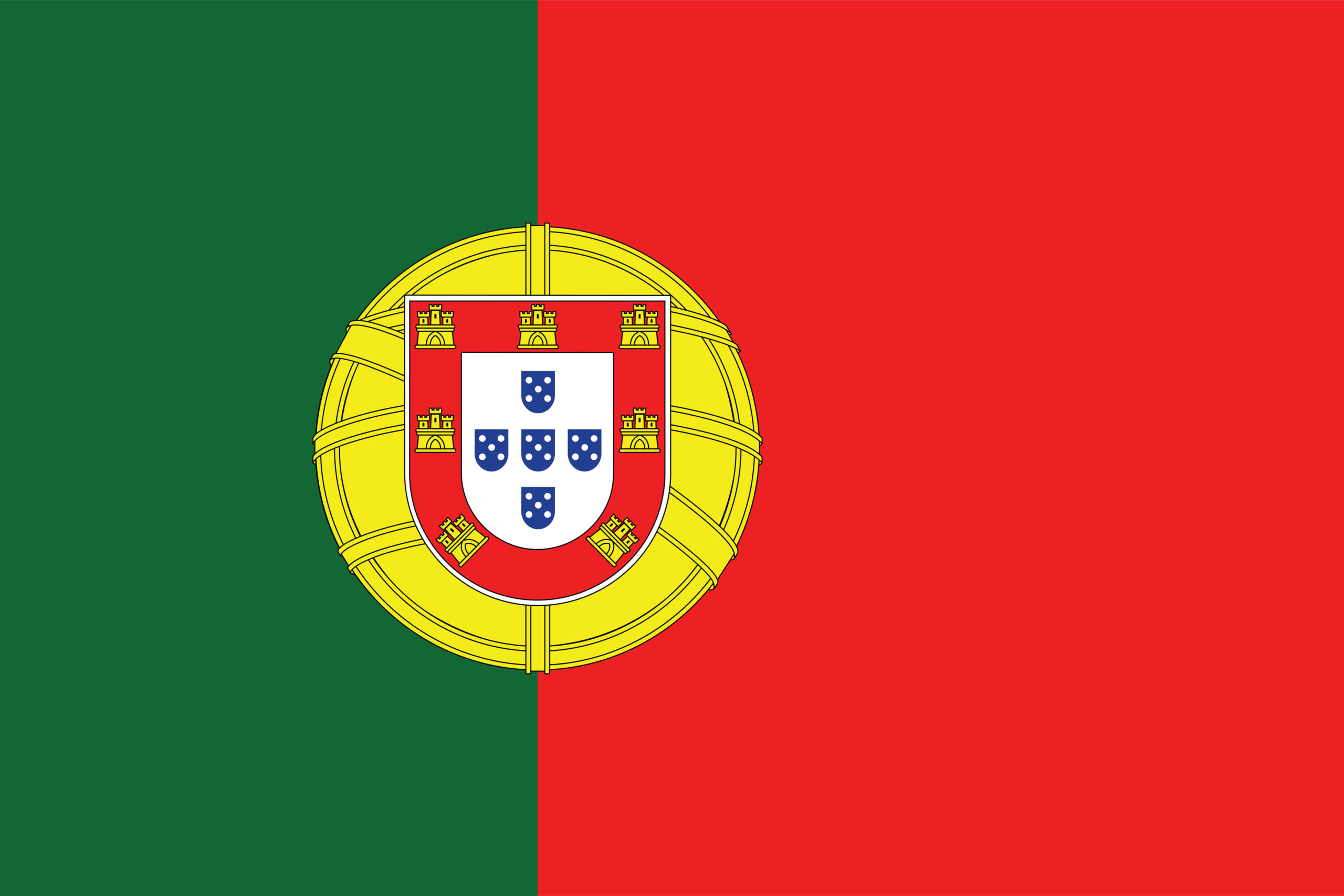Day 1: Arival
Arrive in Yerevan and transfer to the hotel.
Day 2: Yerevan - Garni - Geghard - Yerevan
Early in the morning arrive in Yerevan, meet with the guide and transfer for the hotel. After breakfast, we start the cognitive day and get acquainted with the famous sights of Armenia.
In the morning we take the road to the village of Garni. After a short drive, we find ourselves in a village built on a rocky promontory. We visit the temple of Garni, which dates back to the first century AD. The Garni Temple, built of large basalt stones, is the only pagan temple in Armenia.
The temple was rebuilt from ruins during the Soviet period. Then we visit Geghard Monastery. There are large rocks around the monastery, which is why it is partly carved into the rock. Founded in the 4th century, the Geghard Monastery is a UNESCO World Heritage Site.
In the afternoon we will return to Yerevan. We may spend a free evening in the centre of the city, near Republic Square. Republic Square is the largest square in Yerevan, surrounded by various government buildings.
Here we will find many interesting restaurants where we can taste traditional dishes. Late in the evening, we can attend the Fountain Show, which is held every evening at Republic Square.
Day 3: Yerevan - Khor Virap - Yerevan
In the first half of the day, we visit Khor-Virap Monastery, which is an hour’s drive from Yerevan. Khor-Virap is the nearest place near the glorious Biblical Ararat. Ararat is a sacred mountain, a place of salvation for mankind, where Christian pilgrims from all over the world regularly visit.
We also stop for a photo of a special shot of the fusion of Biblical Ararat and the ancient monastery. Then, in the afternoon, we will return to Yerevan and devote ourselves to the important sights of the capital. We will start touring Yerevan at the Cascade.
This is a grand staircase in Yerevan. In addition to the cascading exterior steps, there are several levels on which fountains and statues are placed. The staircase helps pedestrians to see central Yerevan and Mount Ararat. We also stop by at the Yerevan Opera and Ballet Theater, the Soviet monument “Mother of Armenia”.
Day 4: Yerevan - Echmiadzin - Gyumri
On the fourth day of the tour, we continue to visit important religious monuments. In the morning we will drive to the town of Vagharshapat near Yerevan, formerly called Echmiadzin and the old capital of Armenia. Today this city is the religious centre of the country.
We will see the Echmiadzin complex. The monastery complex includes the Echmiadzin Cathedral, the Hripsime Church, and the Gayane Church. The complex also includes a museum with an interesting collection of medieval decorative art.
Built-in the 4th century, this ancient complex is included in the list of UNESCO World Heritage Sites. In the afternoon we will leave for Gyumri, which is the second-largest city in Armenia.
Day 5: Gyumri - Bavra (Border) - Akhaltsikhe
Our trip to Armenia ends this morning. After breakfast, we take the road to Georgia. After crossing the border we find ourselves in one of the most beautiful parts of Georgia, Samtskhe-Javakheti. We visit the Vardzia Monastery Complex, which is the largest rock-cut city in Georgia and can be easily seen from afar.
The monument of Georgian artistic culture of the twelfth-thirteenth century is located in thirteen tiers. The Church of the Assumption, refectories, sanctuaries, tunnels, a large number of cellars, and amphorae. Today Vardzia is a historical-architectural museum reserve and one of the most important tourist attractions.
We continue our journey to Akhaltsikhe, which is the administrative center of the region. During the trip, we will see the Khertvisi fortress. Let’s take a photo of this medieval defensive structure. After arriving in Akhaltsikhe, we visit one of the most distinguished monuments in the region, Rabat Fortress.
It was the most important defensive structure, its walls remember many difficult battles. This medieval fortress complex is currently being rehabilitated. The modern part of the restored Rabat Fortress is very impressive. The first day of the trip to Georgia ends in Akhaltsikhe.
Day 6: Akhaltsikhe - Kutaisi
It is time to travel to western Georgia. We continue the road to Kutaisi, which is one of the oldest cities in the world. Its centuries-old past attracts visitors to discover famous or unknown places.
Today Kutaisi is the third-largest city in Georgia and one of the most popular tourist destinations. We visit Gelati Monastery. Gelati is a Georgian architectural ensemble, which was the most important centre of medieval Georgia.
The centuries-old monastery with its beautiful paintings is deservedly included in the list of UNESCO World Heritage Sites. We also see the Bagrati Cathedral, which is a symbol of Georgia’s strength in terms of cultural load and architectural solution.
In the evening we walk in the central streets of Kutaisi, where the charm of the old city is especially felt. This day of travel ends in ancient Kutaisi.
Day 7: Kutaisi - Gori - Uplistsikhe - Gudauri
Our short visit to Kutaisi ends this morning. We say goodbye to historical Kutaisi and continue our way to Kartli. We will visit the Stalin Museum in Gori. Few people know that the leader of the Soviet Union, Joseph Stalin, was born in Gori.
The museum complex includes the memorial house where Stalin was born and spent his childhood, the exhibition building, and the private carriage with which he traveled to Tehran, Yalta and Potsdam. In the afternoon we will visit the cave town, Uplistsikhe.
Uplistsikhe was connected with the Silk Road, which passed here. It was one of the oldest settlements and urban centers in the Caucasus. In the ancient city, there is a three-nave Byzantine-style basilica named after St. George, sacrificial amphorae outside the church, Queen Tamar Hall, a secret tunnel that leads to the river Mtkvari.
The once glorious castle-town is now an open-air museum and deservedly considered one of the most important tourist monuments in the country. Then we will follow the military road to Gudauri, which is one of the most spectacular routes in Georgia.
On the way, we stop at the colorful Zhinvali Reservoir and visit the beautiful Ananuri complex. While traveling in the Caucasus Mountains we will enjoy the beautiful panoramic views of the region. During the trip, we can see flocks of sheep on green slopes. In the evening we will stay in Gudauri ski resort.
Day 8: Gudauri - Stepantsminda - Mtskheta - Tbilisi
In the morning we will leave for Stepantsminda, famous for the Great Caucasus. We will stop at the “Peace Monument” near Gudauri to take a photo of the beautiful mountains of the Caucasus. The renovated building is one of the most interesting examples of Soviet modernism and is constantly in the spotlight due to its special location.
The view is amazingly large and impressive. After arriving in Stepantsminda we will visit Gergeti Trinity Church. Today, Gergeti Trinity is the most popular tourist destination in Georgia. With its special location and centuries-old history, it really represents the face of Georgia.
The green slopes decorated with mountain flowers and the Great Caucasus leave an unforgettable impression on the visitor. The snow-covered glacier gives a special charm to this place. In the afternoon we will visit Mtskheta. Mtskheta is the ancient capital and religious center of Georgia.
The historical monuments of Mtskheta are distinguished examples of Georgian architecture of the medieval era. They emphasise the high level of culture and religious figures of the ancient Georgian kingdom. In Mtskheta we will visit the UNESCO World Heritage Sites: Jvari Monastery built in the 6th century and the beautiful Svetitskhoveli Cathedral.
The Jvari Monastery offers an amazing panoramic view of the city at the confluence of the Mtkvari and Aragvi river. Later we will visit Svetitskhoveli Cathedral, which is the largest historical building in Georgia among the survivors and leaves a great impression on the visitor.
Day 9: Tbilisi
After a late breakfast, we start our Tbilisi sightseeing tour to get acquainted with the city. Walking through the historical part of the city and enjoying the unique combination of cultures. Meandering through the narrow streets of the city we will come-across various religious buildings: Churches, Synagogues, Mosques, Wooden houses built in the 19th century with colourful balconies, sulphur baths, the Narikala fortress.
Next, we take in the Georgian National Museum, where a great many intricate Georgian treasures are preserved. To finish up this introduction to the city we peruse Rustaveli Avenue which is the main central boulevard.
The rest of the day is left for exploring Tbilisi further, tasting wine in one of the many wine-bars, and getting acquainted with Georgian cuisine in one of the many great restaurants in the city centre.
Day 10: Tbilisi - Sighnaghi - Tsinandali - Telavi
In the morning we take the road to the Kakheti region. This side of Georgia is considered the homeland of wine. However, apart from winemaking, Kakheti is distinguished by monuments of different periods and diverse nature.
Here we will visit the fortified town Sighnaghi, which leaves a special impression with its beautiful streets and distinctive natural location. We will walk along the cobbled streets with colourful houses and balconies, enjoy the amazing view of the snow-capped Caucasus Mountains and the vast valley of Alazani.
Today we take lunch in one of the modern wineries, where we will be treated to traditional Georgian dishes and selected wines.
Then we visit the Tsinandali Museum Complex. The complex includes a house-museum built in the 19th century, a beautiful garden and a unique wine cellar.
Then we will visit a small family cellar and taste the natural and unique wines placed in a pitcher by the traditional method. The Georgian traditional method of making qvevri wine has the status of a UNESCO Intangible Cultural Heritage Site.
Pleasantly obscured by wine, we continue our way to the historic city of Telavi.
Day 11: Telavi - Lagodekhi(border ) - Sheki
In the morning we will visit Telavi agricultural market. Various products are placed on the open shelves: seasonal ripe fruits, healthy vegetables, colourful spices, a variety of cheeses, fresh meats, beaded nuts, or walnuts.
Then we will visit Nekresi Monastery. The monastery complex is the most important heritage of Orthodox Georgia.
A visit to Kakheti is incomplete without a local family dinner. The kindness of the hosts, the immediacy, the taste of homemade dishes and wine create special emotions around the table.
After an hour-long drive, we will cross the border into Azerbaijan and continue our journey to the historic Sheki.
Day 12: Sheki - Shemakha - Baku
The first morning of the trip to Azerbaijan is dedicated to one of the oldest cities in the country – Sheki. The main attraction of the city is the Khan Palace, which was built in the 18th century.
The historic center of Sheki and Khan Palace has been inscribed on the UNESCO World Heritage List.
In the afternoon we will move in the direction of Shemakha. Shemakha is one of the oldest cities in Azerbaijan.
Here we will visit the famous Juma Mosque. This mosque impresses the visitor with its size.
In the evening we arrive to Baku, which immediately demands our attention with its beauty.
Day 13: Baku - Gobustan - Baku
After an hour-long drive from modern Baku, we will find ourselves in an ancient rock-carved city. Gobustan State Historical-Ethnographic Reserve is one of the sights of the country today.
Gobustan rock painting is included in the list of UNESCO World Heritage Sites.
In the afternoon we will give a tour of Baku. We walk to the historical center of old Baku, where the important sights of the city are gathered: Maiden Tower, the Palace of the Shirvanshahs, the Shemakha Gate, the Caravanserai.
The oldest part of Baku, which includes the Shirvanshah Palace and Maidan Tower, has been inscribed on the UNESCO World Heritage List.
At the end, we stop at the three-flame tower, which has become a symbol of modern Baku.
After the study tour, we can spend a pleasant evening on the boulevard of Baku or take a walk on the busiest Nizami Street in the city, which is full of souvenir shops and cafes.
Day 14: Departure
Transfer to the airport and departure.













